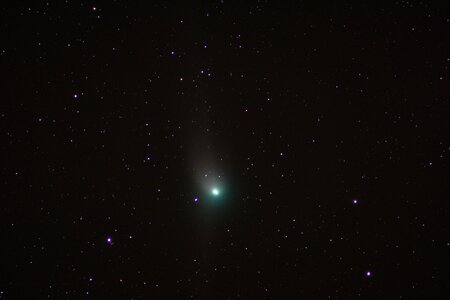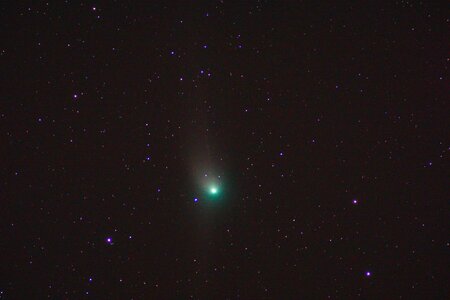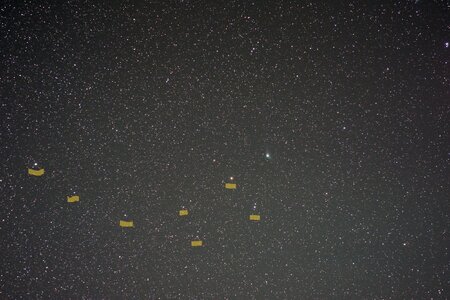Astrnmrtom
Active Member
- Followers
- 1
- Following
- 0
- Joined
- May 20, 2021
- Posts
- 82
- Likes Received
- 173
- Trophy Points
- 0
- Name
- Thomas M
This is a stack of 15 - 60 second exposures taken with my a6000 @iso 2500. Prime focus through my 94mm f/7 refractor. Because the comet is moving so fast against the background stars, the nucleus is a little elongated. Hints of a thin ion tail, as well as a sunward tail. Dust tail is reddish. Coma is indeed green.
Haven't figured out how to remove the chromatic aberration around the brighter stars in Affinity Photo. Did a little tweeking with levels and vibrance.
Stacked with Deep Sky stacker.
Used an inexpensive intervalometer. Works great. Taken in the desert of Arizona about 60 miles west of Phoenix.
Tom

Haven't figured out how to remove the chromatic aberration around the brighter stars in Affinity Photo. Did a little tweeking with levels and vibrance.
Stacked with Deep Sky stacker.
Used an inexpensive intervalometer. Works great. Taken in the desert of Arizona about 60 miles west of Phoenix.
Tom



